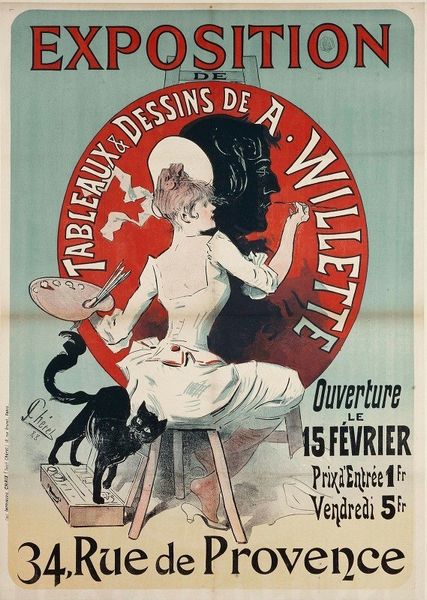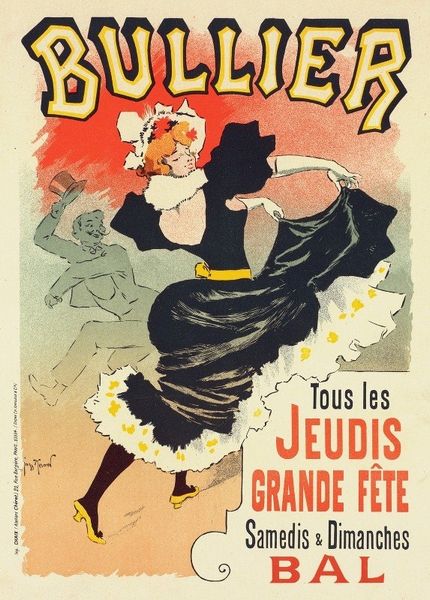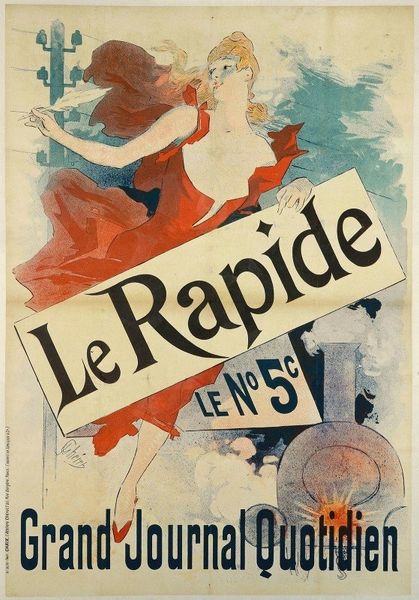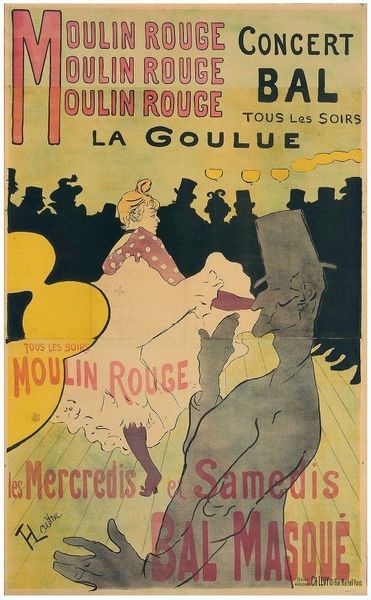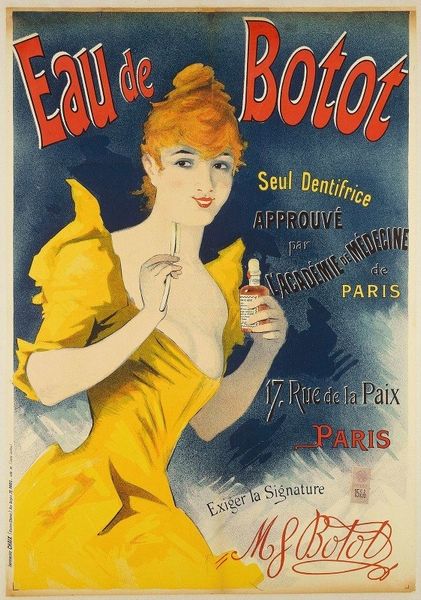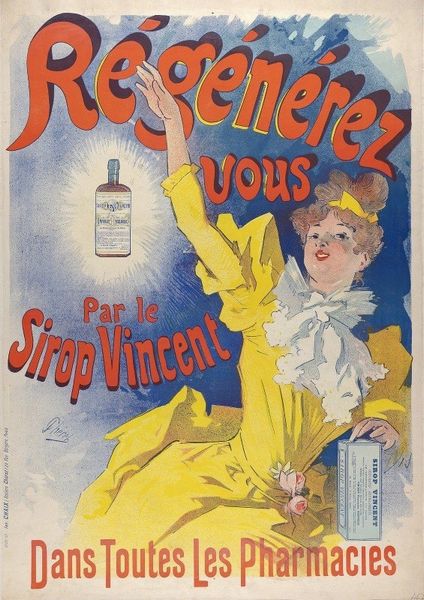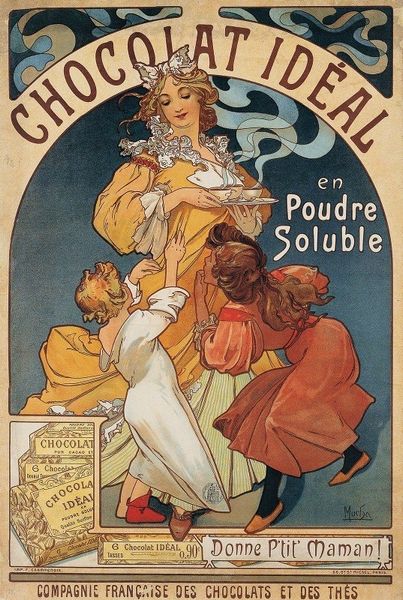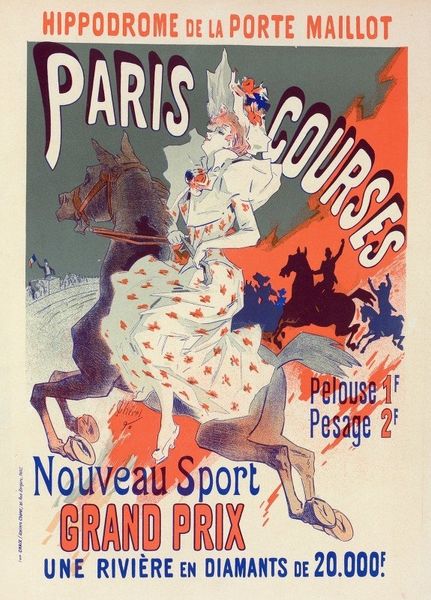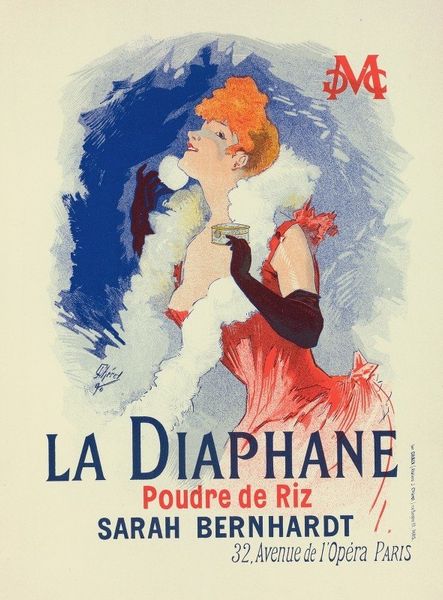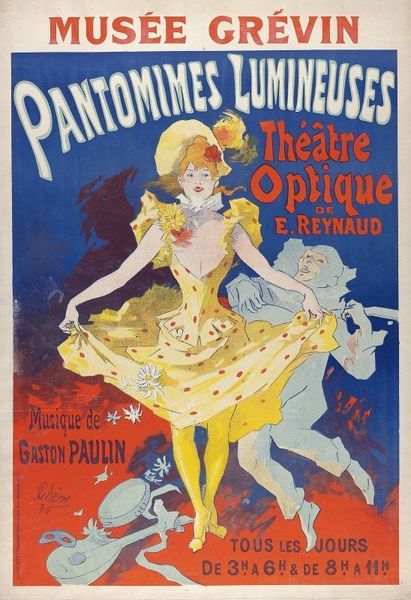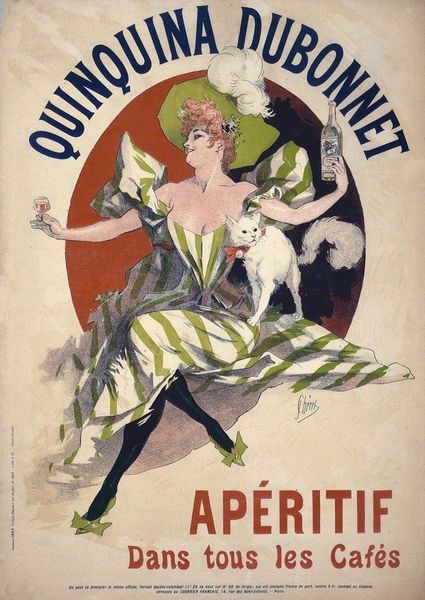
lithograph, poster
#
art-nouveau
#
lithograph
#
figuration
#
intimism
#
nude
#
poster
Copyright: Public Domain: Artvee
Editor: Here we have Jules Chéret’s "Eau de Sirènes," a lithograph poster from 1900. It's quite eye-catching, a flurry of swirling water and figures, typical of the Art Nouveau style. The sirens themselves look quite mischievous, almost playfully teasing the viewer. As a commercial poster, it's fascinating. What can you tell me about its cultural significance? Curator: Indeed. It’s a poster, an intentionally public piece. It wasn't meant for a gallery; its goal was to persuade you to buy something – hair dye. How do sirens fit into this picture? Aren't they supposed to be dangerous? This reimagining is quite revealing of societal desires and anxieties surrounding female identity. How might the marketing strategy play with anxieties about aging or changing appearances in women? Editor: That's a fantastic point. The sirens aren't luring sailors to their doom here, but rather offering a kind of transformation through the promise of recolored hair. Were such products commonly advertised like this? Curator: Exactly! The commercial element is critical. Look at the overt text – location and usage instructions! How might that positioning – "found at all hairdressers and perfumers" - reflect access, class, and leisure in Parisian society at the turn of the century? What values do you think were being pushed alongside the hair dye? Editor: So it's more than just an advertisement, it's a window into the cultural landscape of the time, revealing anxieties and aspirations related to beauty and consumerism. This poster really speaks volumes about the evolving role of women and their relationship with the emerging culture of consumerism. Curator: Precisely. And thinking about the power of these sirens -- do they really hold the secret to transformation, or is that power subtly being placed in the hands of the consumer, the women who chose to buy and use the product? Editor: That’s definitely something to think about. I never thought about it that way before! Curator: It is interesting how such an apparently simple commercial lithograph really opens out onto so many socio-cultural complexities when you start to consider its original context and the specificities of its public address.
Comments
No comments
Be the first to comment and join the conversation on the ultimate creative platform.
